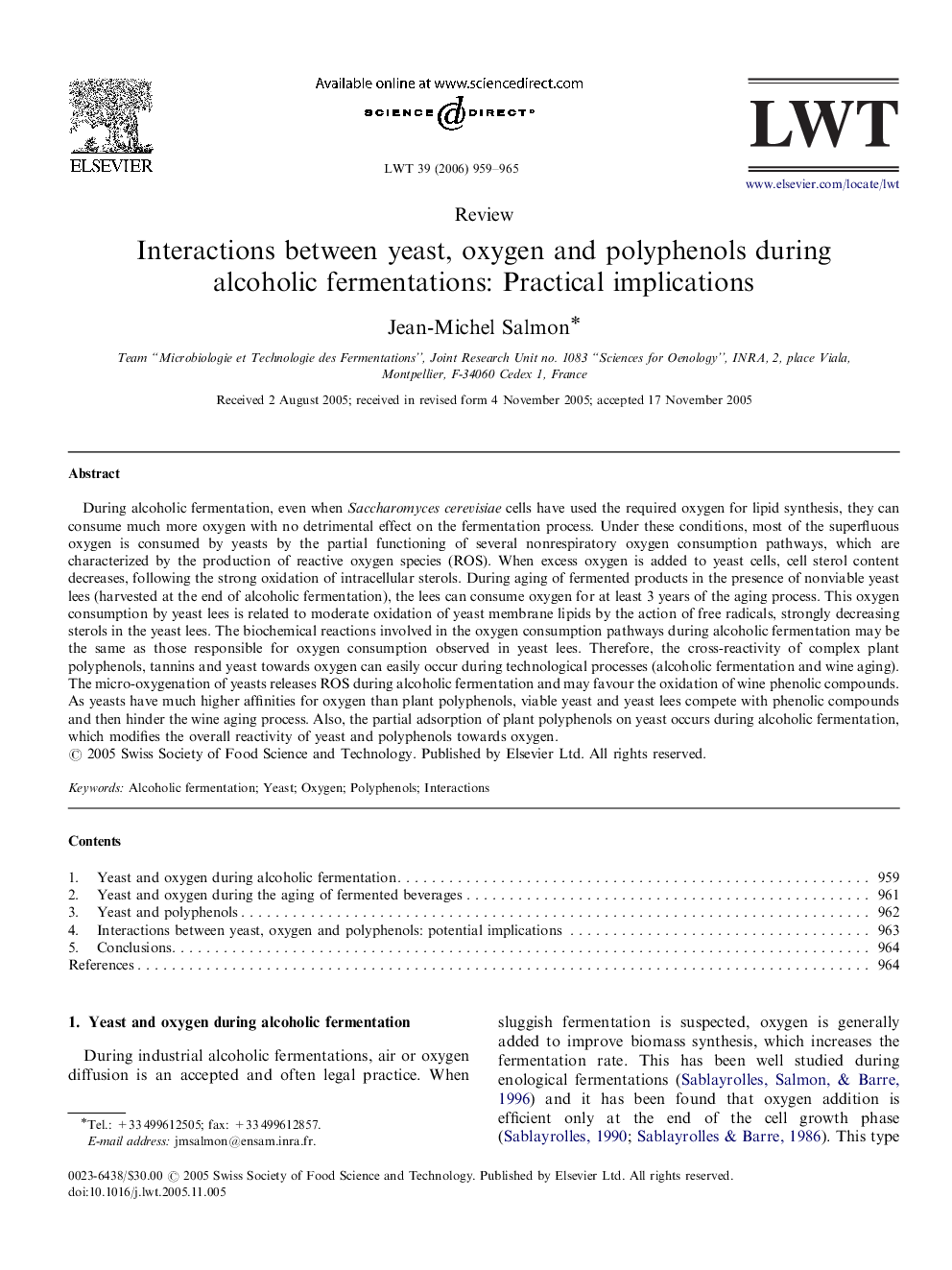| کد مقاله | کد نشریه | سال انتشار | مقاله انگلیسی | نسخه تمام متن |
|---|---|---|---|---|
| 4565577 | 1330989 | 2006 | 7 صفحه PDF | دانلود رایگان |

During alcoholic fermentation, even when Saccharomyces cerevisiae cells have used the required oxygen for lipid synthesis, they can consume much more oxygen with no detrimental effect on the fermentation process. Under these conditions, most of the superfluous oxygen is consumed by yeasts by the partial functioning of several nonrespiratory oxygen consumption pathways, which are characterized by the production of reactive oxygen species (ROS). When excess oxygen is added to yeast cells, cell sterol content decreases, following the strong oxidation of intracellular sterols. During aging of fermented products in the presence of nonviable yeast lees (harvested at the end of alcoholic fermentation), the lees can consume oxygen for at least 3 years of the aging process. This oxygen consumption by yeast lees is related to moderate oxidation of yeast membrane lipids by the action of free radicals, strongly decreasing sterols in the yeast lees. The biochemical reactions involved in the oxygen consumption pathways during alcoholic fermentation may be the same as those responsible for oxygen consumption observed in yeast lees. Therefore, the cross-reactivity of complex plant polyphenols, tannins and yeast towards oxygen can easily occur during technological processes (alcoholic fermentation and wine aging). The micro-oxygenation of yeasts releases ROS during alcoholic fermentation and may favour the oxidation of wine phenolic compounds. As yeasts have much higher affinities for oxygen than plant polyphenols, viable yeast and yeast lees compete with phenolic compounds and then hinder the wine aging process. Also, the partial adsorption of plant polyphenols on yeast occurs during alcoholic fermentation, which modifies the overall reactivity of yeast and polyphenols towards oxygen.
Journal: LWT - Food Science and Technology - Volume 39, Issue 9, November 2006, Pages 959–965